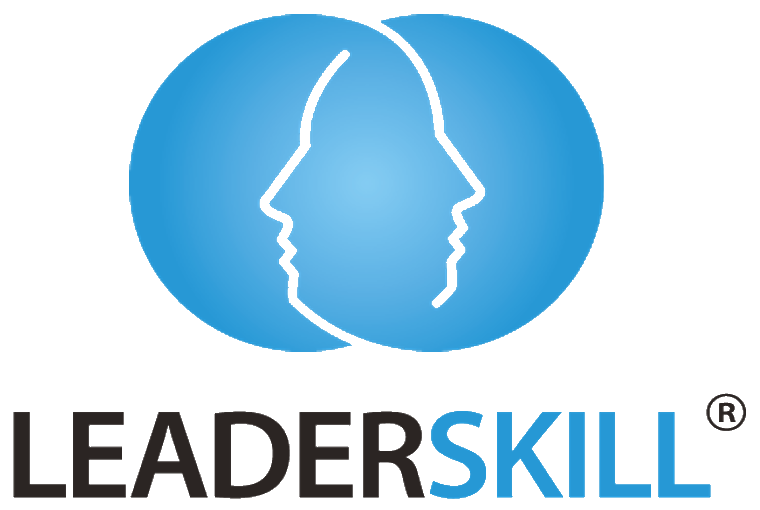
Welcome to our newsletter for facilitators. Everything we do at Leaderskill is aimed at developing “Every Person Leadership” based on our deep belief that the future of our world will ultimately be determined by the quality of the leadership that we bring to it.
Our focus is to help people build their personal and interpersonal effectiveness, find purpose and meaning in their work and contribute to their organisation’s and our society’s collective future. We look forward supporting you in your own facilitator journey.
In this edition of The Facilitator:
- The Latest at Leaderskill
- The Facilitation Edge: The “Fixer Impulse” (and how to work with it)
- Exploring Leadership: The Infinite Game.
The Latest at Leaderskill

Our new website
Earlier this year, we launched our new Leaderskill website (www.leaderskill.com.au) to reflect our commitment to developing “Every Person Leadership” and to highlight the ways in which we can help facilitators work towards these outcomes in their own organisations. We hope you will take a look, and, of course, we welcome your feedback!
New Special-Purpose 360s
Over the last 12 months, Leaderskill has continued our 20+ year collaboration with NSW Health to develop a world-class 360 and development resources that align with NSW Health models of leadership and safety and quality. From its first use, this 360 has been well received and Local Health District facilitators are now using it to help participants in clinical contexts develop their leadership skills.
Leaderskill is also continuing to expand our suite of 360s aligned with State and Commonwealth Government capability frameworks, including the NSW Public Service Capability Framework and the APS Integrated Leadership System. Let us know if there is a specific framework that you would like to use in your organisation.
Our latest leadership development resources
To provide a complete development experience for all participants using our 360s, irrespective of the model, we have rewritten our Professional Development Plans (PDP) and supporting resources (including a new Leadership Guide) to align with any 360° feedback model you use. Contact us for more information.
The Leader/Manager Styles Personal Insight Tool is a separate self-assessment that can be used with any 360 (or as a standalone) to help participants understand how their preferred style(s) as a leader/manager might be influencing their feedback. The included action plan can now be edited and saved from within any browser or PDF viewer.
The Facilitation Edge

The “Fixer Impulse” (and how to work with it)
Have you ever been tempted to offer a solution to a participant? How did it go? Sometimes accepted, sometimes rejected, depending on the context, level of rapport, timing and other factors?
Even though the essence of facilitation is to help a participant find their own way forward, there are times when it can be very appropriate to help them “fill in the gaps” – i.e. when they don’t know what they don’t know (and possibly won’t without some guidance). However, if a person is in a heightened emotional state (e.g. defensive or apprehensive), then they might immediately dismiss any attempt to focus on an outcome or solution.
As my father, Ronald Forbes, used to say:
When the level of emotion is above their ears, then they can’t hear you!
Yet, it is at exactly the moment when another person’s emotion is high that we are often drawn to try and “fix” the situation to help them. And this can be subtle…
Do you have a “fixer impulse”?
I admit it: I am very much a “fixer” at heart. I must watch myself all the time. I just love helping people! Often, without even realising it, I will jump in with a solution. But as a facilitator, or even as a parent, a partner or friend, providing an “answer” can distract the other person from achieving their own learning or deep insights. It can also break rapport with that person (read: “annoy them”), and it switches the focus of the interaction from “them” to “me”.
You might say, “Well, isn’t this facilitation 101?” Theoretically, yes. However, I wrote this article because I have seen that I am not alone. Over the years, I have worked with many facilitators who have subtly moved into “fixer” mode without noticing that they are doing it. It often involves trying to help a person put a positive “spin” on their problem or guiding them to a solution before fully acknowledging the impact of the current situation on that person.
So, how do we move beyond the “fixer impulse” and what are some alternatives that will still allow us to use our experience and wisdom but without getting in the other person’s way?
Pattern Interrupt
Interrupting our pattern is crucial to choosing a different behaviour. One of the best interrupts, backed by neuroscience, for almost any behaviour, including the “amygdala hijack” (sudden anger), is to:
- Stop and pause: gather your thoughts together for a few seconds before doing anything else. This could be saying nothing at all or giving a neutral acknowledgement like, “Okay”, “I see” or “Alright…”
- Get curious: ask yourself questions like, “Where is my intended response coming from?” “What is the need of the participant or situation?” “How can I best support them without taking over?”
Then, you can consider your next steps and move forward in “facilitation mode”.
Staying in “Facilitation Mode”
Almost all good practice coaching and facilitation methodologies are based around some form of the principle of “explore first, then influence”. In Neurolinguistic Programming (NLP), this is described as, “Explore their model of the world before attempting to influence their model of the world (if/when appropriate).”
“Exploring” is usually about listening, putting yourself in the other person’s “shoes”, asking questions from a place of curiosity or speaking with empathy. The benefits are:
- Helps the person feel heard, which, in turn, lowers their level of emotion (“below their ears”) so that they can be more receptive to focusing on outcomes and how to get there.
- Getting yourself out of the way so that you can fully understand the other person’s experience rather than thinking about what you are going to say next.
- Learn more about the other person’s position, without judgement, so that you can understand their motivations and identify opportunities that they might not have considered.
The language of “exploring” can include observations and invitations such as:
- It sounds as though you are … (feeling/emotion). [Reflect back the emotion they might be experiencing.]
- I’m interested/curious to know (more) about…
- What was that like for you?
- How did you handle that?
- I imagine that for you… (their possible experience). Am I understanding that correctly?
Influencing their model of the world can include:
- Helping them to “reframe” their current (limiting) experience so that they understand it from a more enabling perspective.
- Helping them to become aware of opportunities in the situation that they might have missed.
- Guiding them to learn about skills that could help them better deal with a particular challenge.
Examples of “influencing” language can include:
- What is it that you would really like to have happen?
- Perhaps you have considered that…?
- How could this be different…?
- Have you thought about…?
- How could this benefit you/others?
- What would it be like if…?
Do you have a “fixer impulse”? What do you do to work with it? What type of language do you use to explore others’ experiences and influence their learning and insight? I would love to hear from you!
Exploring Leadership

The Infinite Game
Is your team or organisation playing to win or playing to stay in the game?
Simon Sinek (of Start with Why fame) has captured one of the most useful ways to understand individual, team and organisational strategy that I have come across in recent years. He has an excellent YouTube talk on this topic (see below for the link).
Based on the ideas of James P. Carse, Sinek’s definition of a “game” is any situation where you have at least two competitors. He differentiates between “finite” and “infinite” games in leadership and describes the potential pitfalls of using finite strategies in infinite environments. From Sinek’s perspective, all organisations are in a game of some form, even those that are not commercially focused. But which one is it? Finite or infinite (or a mixture of both)?
What is an Infinite Game?
Sinek defines finite games as those where there are known players, fixed rules and agreed upon timelines and objectives, at which point the game ends, usually with a winner and loser (e.g. organised sports). Infinite games are those where there are both known and unknown players, the rules are changeable, and the aim is to continue the game.
A system is stable when you have a finite player against finite player; everyone knows the rules and the game is either won or lost. When there are two infinite players, the system is also stable. The game only ends when one player runs out of the will or resources to keep playing.
However, as we often see in global politics, a finite player runs into difficulty when they try to play against an infinite player. They make very different strategic decisions. A finite player playing is at high risk of losing their desire or running out of resources to stay in the game. This is the difference between fighting to win or fighting for your life.
How does the Infinite Game apply to leadership?
Sinek suggests that strategy in many organisations comes down to decisions about actions that will result in achieving specific end points, often stated as “being the best”, “winning against our competitors”, or “meeting our performance targets”.
Yet, as Sinek points out, when you have achieved these goals, the game continues, ready or not! Many organisations rise to the top of their industries or improve their performance only to fall again because their goals were short term and they had not prepared for what happens next.
The game never stops. There is no such thing as “winning” business or health or education or society and the environment. These are all infinite games.
Leaders who use finite drives and language in their organisations start to break down trust, reduce cooperation and prevent innovation. When this happens, they risk running out of the will or resources to keep playing.
Infinite players don’t need to always be “ahead” of others because the goal is not to win. It is to continue. In an infinite game, we compete against ourselves: this is where we were yesterday; this is where we are today; this is where we want to be tomorrow. Systems, governance, culture, quality of relationships, trust.
How is this different from Long Term Thinking vs Short Termism?
Just as Carol Dwek’s “Growth Mindset” provided a simple, usable way for people to understand the importance of learning and development that had been already discussed for years, the Infinite Game puts forward an easy-to-use point of reference for anyone to assess whether or not what they are working on will achieve a long-term outcome: will it keep them in the game?
In addition, Sinek provides a robust framework of the core leadership practices and concepts that are needed to successfully lead in the Infinite Game.
Leading in the Infinite Game
To be played well, the Infinite Game requires a unique mindset that combines right balance of essential leadership skills and perspectives. Sinek describes these as:
- Just Cause: the organisation must have a collective purpose that is so strong that people are willing to advance that cause over their own interests.
- Trusting Teams: the need to create psychological safety, where it is okay to talk about things that make me vulnerable.
- Worthy Rival: others who are as good or better than us at our own work, who force us to look at how we can improve. Where competition is about winning, rivalry is about advancing.
- Capacity for Existential Flexibility: constantly looking for new opportunities and enough flexibility to make the most of them when they arrive. Willingness to innovate.
- Courage to Lead: staying with the cause even when the pressure is on. Having the conviction to serve the greater good even when it might not work out well for us in the short term.
The ultimate aim of leading with an infinite mindset is to develop our organisations and people so that they are better off because we have worked there, that they are more able to navigate the challenges of the future, and that they can continue to contribute to a world in which we can all share.
Start with Why (2011) and The Infinite Game (2019) are excellent books and well worth the read (or listen). Here are Simon Sinek’s acclaimed YouTube talks about these topics: Start with Why (https://www.youtube.com/watch?v=u4ZoJKF_VuA&t=39s) and The Infinite Game (https://www.youtube.com/watch?v=BjZXRs6fAkA). Enjoy!
Has this article got you thinking? How do finite and infinite games play out for you, your teams and your organisation? How might you use these ideas with your own teams or clients? I would love to hear from you.